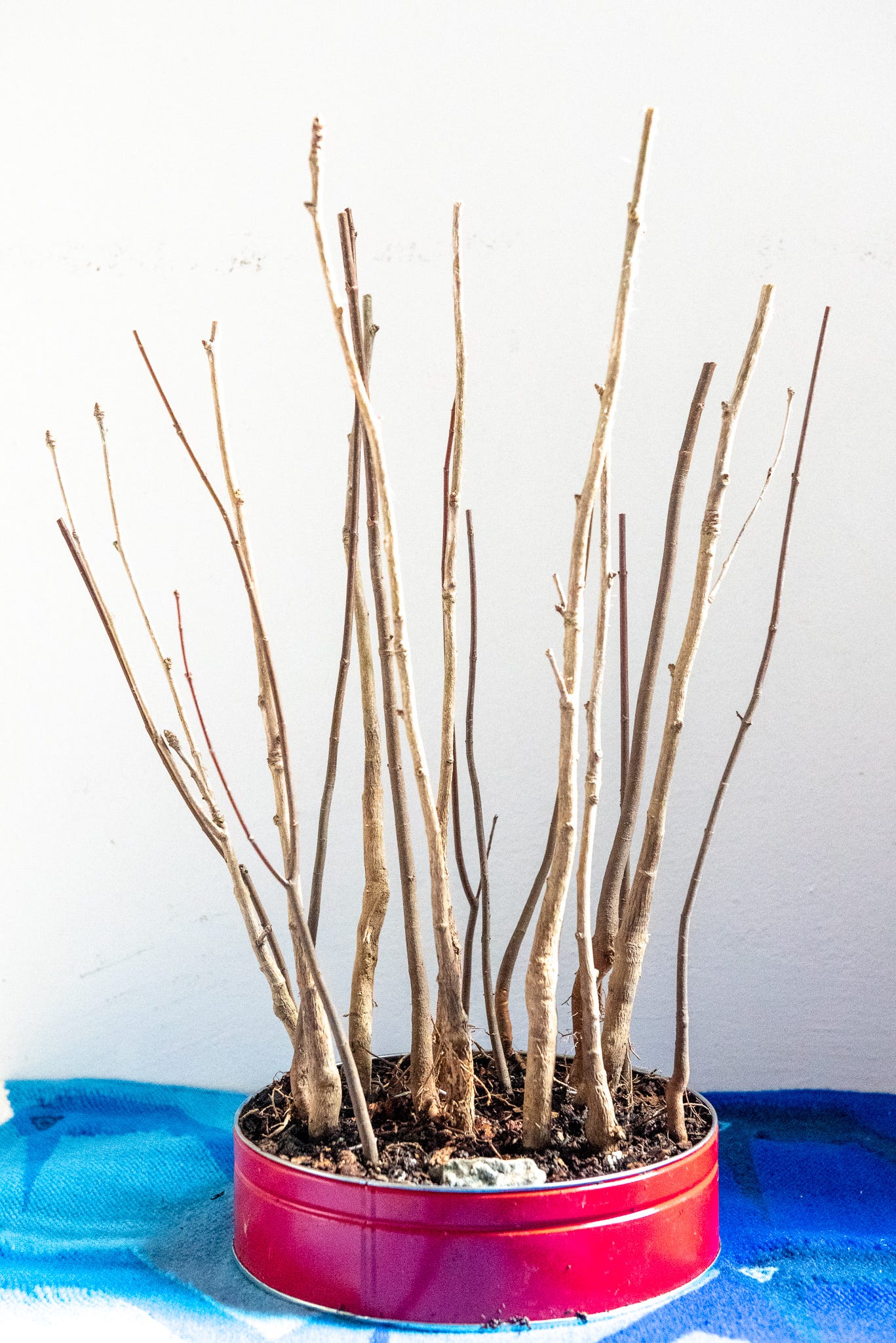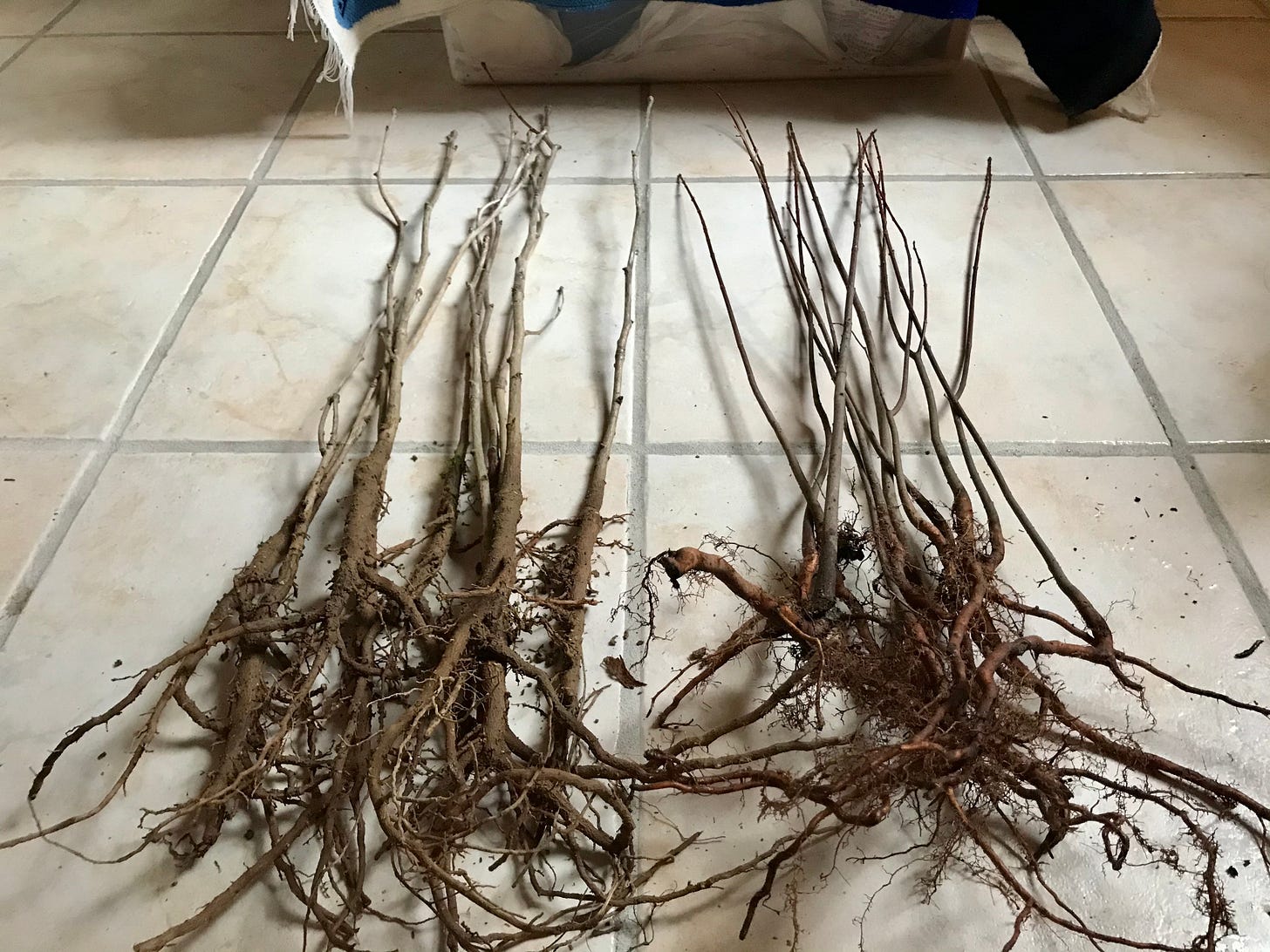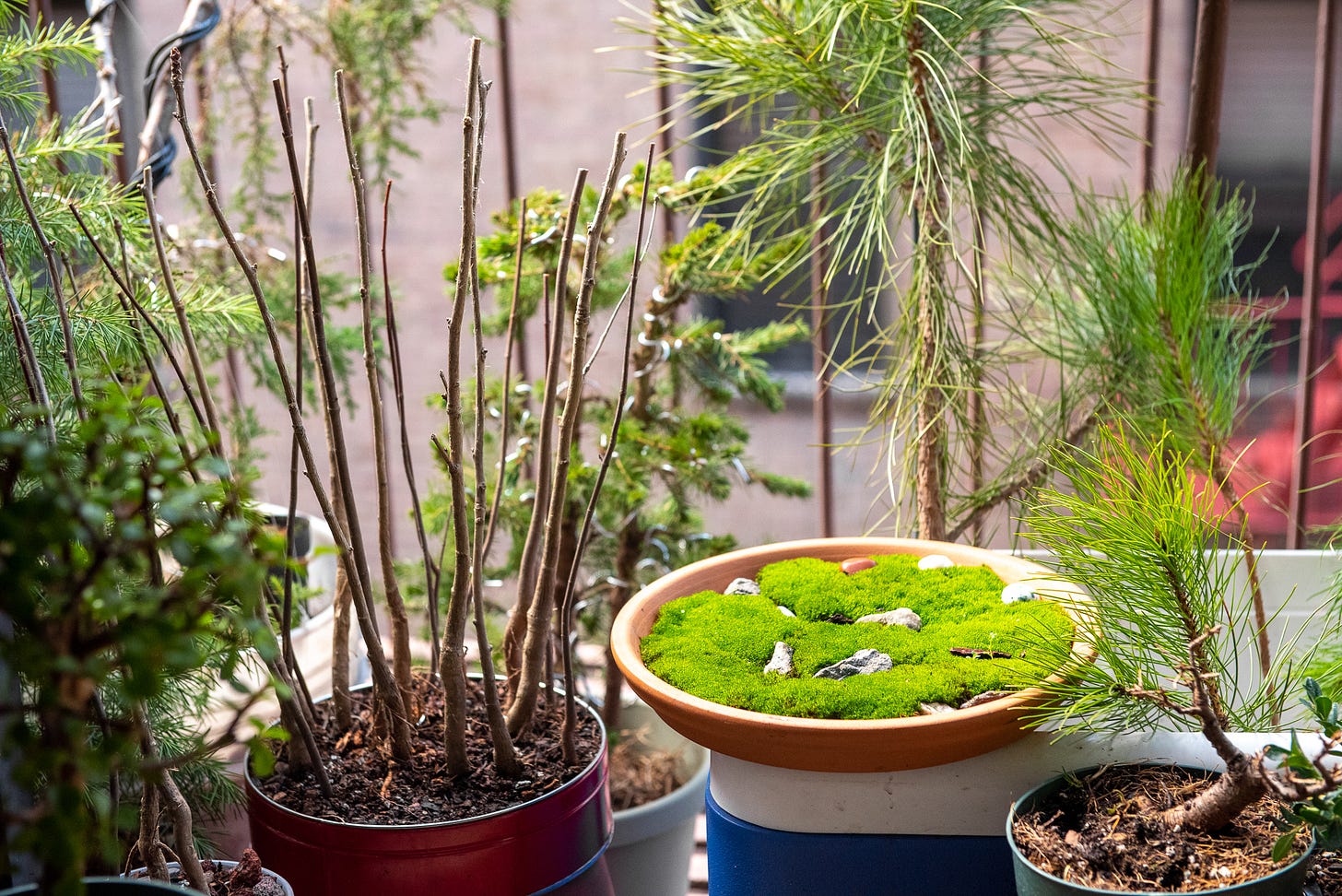A forest in a cookie tin
Or, let's put some sticks in a pot and call it bonsai.
Group and “forest” plantings in bonsai are considered a useful application for otherwise useless material: young upright trees that lack the interest and character to make worthy specimens of their own. They’re relatively easy to assemble, compared to the years of training required for other styles. And most importantly, the startup material is cheap; you can buy saplings like these on eBay and Etsy for a buck or two a head.
Besides, I only have one other deciduous tree in my collection—the rest are evergreens like junipers and pines—so I figured a deciduous forest planting would be worth a try. I love the naturalism of forest designs, which harken back to Chinese penjing landscapes. The nice ones really make you feel like you’re out there in nature, a Gargamel figure looming over some secret Smurf garden.
My first forest doesn’t do any of that, but I like it enough to share with the class. Oh, and the cookie tin wasn’t originally part of the plan. If the planting survives its first year I’ll spring for a nicer pot.
Bonsai “experts” with their “experience” and “research” say you should stick to one type of tree in varying sizes for a forest. Of course, I couldn’t stand for that. These are gingko trees on the left and red maples on the right. Now grown all around the world, gingko biloba is native to China and is the last surviving species of a division of trees that date back 220 million years. You can recognize them by their fan-shaped leaves that turn egg-yolk-yellow in the fall. There’s a beautiful twisting gingko outside my window, and I like the idea of a big cousin tree watching over a young brood.
Red maples, on the other hand, are indigenous to New York, but so far as I can tell don’t grow in my Jackson Heights neighborhood at all. So it’s an impossible forest, this cookie tin. Seems fitting for a place where most of the people who live here came to the US from some place else.
Come fall, if all goes well, my young forest will be festooned with new branches and a #ChristianGirlAutumn motley of red, yellow, and ochre leaves. All will probably not go well—I’m worried about the roots, and the water retention of the soil—but it’s a start. For now the forest will continue recovering from transplant while in dormancy, getting to know the neighborhood.
Tree reading
Literally everything I know about pawpaw trees and their fruits comes from my pal Jed Portman, proprietor of Midwesterner, so this profile of a West Virginia pawpaw nut is a nice change up. [Garden & Gun]
This week marked Tu B’Shvat, the Jewish new year for trees, because of course we have one of those. I love this set of tarot cards designed by Jessica Deutsch that draw on elements of the holiday. [Jessica Deutsch]




When I lived in Alabama I had gotten really into Bonsai bc of being stuck at home and watching a ton of Youtube. Sadly, when we move to NM, I forgot to put the trees in the car and so they sat out on my back porch and likely got thrown away. I've since had to start over. Being in the desert it can be kinda tough to find good ones, so I've taken to grabbing discount trees at Lowe's, etc and reviving them to later prune and shape. I'm excited to continue reading your journey. Hope you have as much fun with it as I have.
I moved to Omaha in January 2020 and my new home has 3 pawpaw trees. Your link to the pawpaw trees is interesting. Thanks.
I'm just starting bonsai in retirement and killed 2 out of 3 trees last year. I figured 1 out of 3 ain't bad. Heck, a .333 batting average gets one into the Hall of Fame in baseball. I look forward to reading the rest of your posts.
Dan